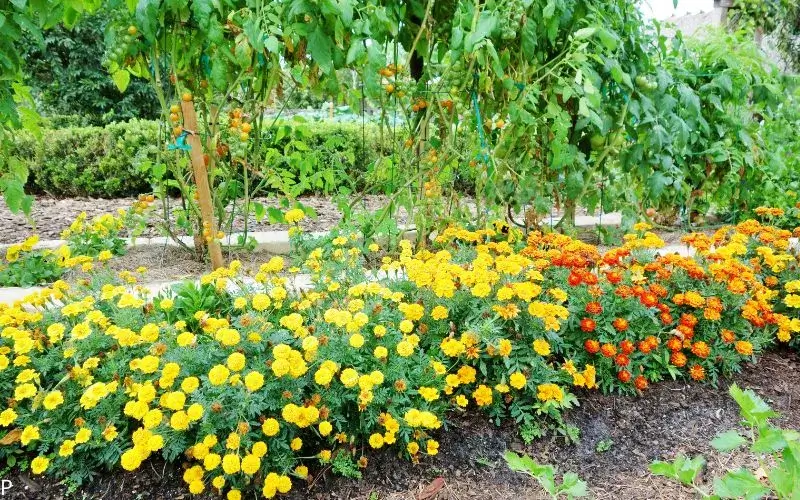Outdoor plants add life and color to any yard or landscape. They include trees, shrubs, flowers, and vines that grow outdoors year-round. In any region, choosing the right outdoor plants depends on climate, soil, and sunlight. From beginners to seasoned gardeners, simple outdoor plants make gardens inviting. Lets explore some of the best plants in this article.
Flowering Outdoor Plants
1. Bougainvillea

- Vibrant bracts in shades of magenta, orange, and white brighten walls and fences, and drought-tolerance makes it a go-to in hot, dry zones.
- Light: Full sun (6–8 hours daily) for abundant blooms.
- Watering: Deep soak once every 10–14 days; allow soil to dry between waterings.
- Pesticide to Avoid: Sevin (carbaryl) can burn foliage and harm pollinators—opt instead for neem oil or insecticidal soap
2. Hibiscus (China Rose)
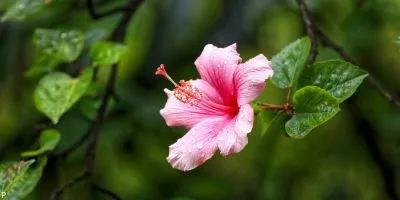
- Large, showy blooms in bold reds, yellows, and pinks attract hummingbirds and butterflies.
- Light: Full sun to partial shade (4–6 hours direct sun).
- Water: Keep evenly moist—water 2–3 times weekly in hot weather; reduce in cool months.
- Pesticide to Avoid: Malathion liquid (undiluted) causes leaf drop—use insecticidal soap for aphids, whiteflies, and thrips.
3. Marigold

- Bright “gold” flower heads repel nematodes in vegetable beds and flower profusely.
- Light: Full sun for at least 6 hours.
- Water: Water when the top inch of soil is dry; avoid overhead watering to prevent fungal spots.
- Pesticide to Avoid: Broad-spectrum insecticides kill beneficials; instead, hand-pick beetles or use Bacillus thuringiensis for caterpillars.
4. Lantana
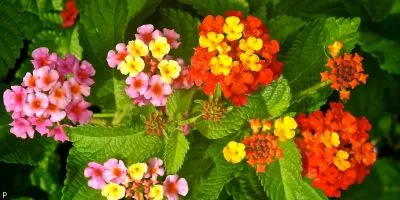
- Tolerates heat and drought; clusters of multicolor blooms lure pollinators.
- Light: Full sun (6 + hours).
- Water: Water deeply once weekly; drought tolerant once established.
- Pesticide to Avoid: Chlordane-type oils can scorch leaves—use neem oil or narrow-range horticultural oil if needed.
5. Desert Rose (Adenium Obesum)

- Striking swollen trunk (“caudex”) and long-lasting pink/white blooms.
- Light: Bright, direct sun (at least 6 hours) for best flowering.
- Water: Allow soil to nearly dry before deep watering; reduce to once a month in winter.
- Pesticide to Avoid: Systemic neonicotinoids risk pollinator health; stick with horticultural oil or insecticidal soap for mealybugs
Non-Flowering Outdoor Plants
6. Aloe Vera

- Medicinal gel soothes burns; architectural form adds sculptural interest.
- Light: Bright, indirect light; a few hours of morning sun.
- Water: Deep water every 2–4 weeks; let soil dry out fully between waterings.
- Pesticide to Avoid: Rarely bothered by pests; avoid heavy-duty fungicides—use neem oil or rubbing-alcohol swabs for mealybugs.
7. Snake Plant (Sansevieria Trifasciata)
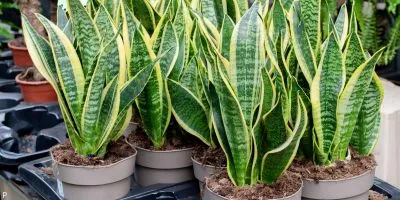
- Air-purifying qualities; nearly indestructible in varied light.
- Light: Low to bright indirect light.
- Water: Water every 3–6 weeks; avoid soggy soil to prevent root rot.
- Pesticide to Avoid: Avoid systemic insecticides; treat scale or mealybugs with insecticidal soap.
8. Money Plant (Pothos/Epipremnum Aureum)
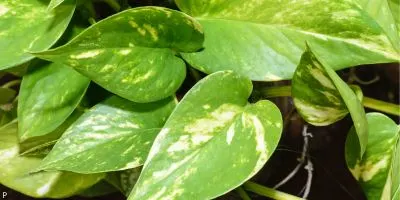
- Fast-growing vine that tolerates low light; ideal for green screens.
- Light: Bright, indirect to low light.
- Water: Water when top 2 inches of soil are dry (about weekly).
- Pesticide to Avoid: Broad-spectrum insecticides harm beneficials; use neem oil or insecticidal soap for aphids and spider mites.
9. Boston Fern (Nephrolepis Exaltata)
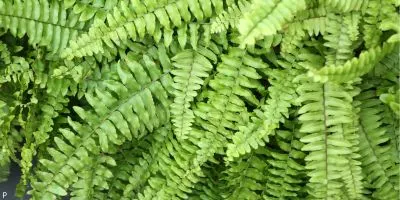
- Lush, arching fronds add tropical texture; great for shade gardens.
- Light: Indirect light or shade; avoid hot midday sun.
- Water: Keep soil evenly moist; mist fronds daily in dry heat.
- Pesticide to Avoid: Avoid systemic insecticides; treat mealybugs or scale with neem oil or insecticidal soap .
Low-Maintenance Outdoor Plants
10. ZZ Plant (Zamioculcas Zamiifolia)

- Glossy, architectural foliage adds year-round interest and thrives on neglect.
- Light: Low to bright indirect light—survives dim corners and sunlit patios.
- Water: Every 2–3 weeks; let soil dry out fully between waterings.
- Pesticide to Avoid: Systemic insecticides can linger in foliage; treat scale and mealybugs with insecticidal soap.
11. Lavender (Lavandula spp.)

- Fragrant blooms and gray-green foliage repel pests and attract pollinators.
- Light: Full sun—needs at least 6 hours daily.
- Water: Infrequent—allow the top 2 inches of soil to dry before watering.
- Pesticide to Avoid: Broad-spectrum insecticides harm beneficials; use neem oil 3-in-1 for fungal or insect issues.
12. Rosemary (Salvia Rosmarinus)

- Culinary herb with aromatic, needle-like leaves; deer-resistant and drought-tolerant.
- Light: Full sun; at least 6 hours to stay bushy.
- Water: When soil feels dry an inch down; avoid waterlogging.
- Pesticide to Avoid: Chlorpyrifos and other systemic organophosphates—opt for insecticidal soap against aphids.
13. Jade Plant (Crassula ovata)
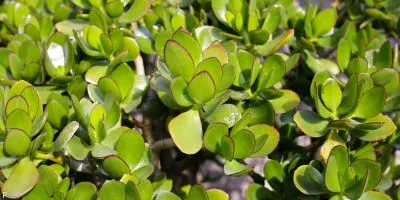
- Succulent form brings sculptural texture and air-purifying qualities.
- Light: Bright light to full sun favors compact growth and flowering.
- Water: Every 3–4 weeks; let soil dry completely to prevent root rot.
- Pesticide to Avoid: Heavy fungicides can scorch leaves; treat mealybugs with neem oil or rubbing alcohol swabs.
14. Geranium (Pelargonium spp.)
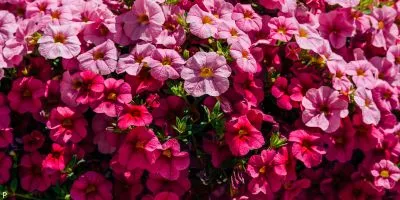
- Long-blooming, colorful flower clusters brighten beds and containers.
- Light: Full sun to light shade; afternoon shade in hot zones.
- Water: Moderate; water when top soil is dry but avoid soggy roots.
- Pesticide to Avoid: Systemic neonicotinoids kill pollinators; use insecticidal soap on whiteflies and aphids.
High-Maintenance Outdoor Plants
15. Rose (Rosa spp.)

- Iconic blooms and fragrance elevate any garden; wide variety of colors and forms.
- Light: Full sun (6–8 hours) for best bud set.
- Water: Deep soak 1–2 times weekly in warm weather; avoid wet foliage overnight.
- Pesticide to Avoid: Carbaryl (Sevin) can scorch leaves and harm bees; use organic fungicides and neem oil for black spot.
16. Cymbidium Orchid (Cymbidium spp.)
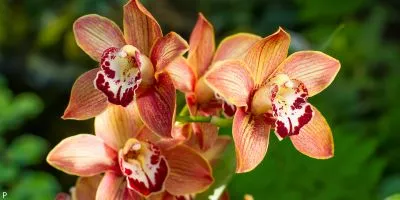
- Long-lasting, exotic flower spikes add tropical flair outdoors or in cool climates.
- Light: Bright but filtered light—morning sun or dappled shade under trees.
- Water: Weekly during active growth; reduce in winter but do not let pots dry out.
- Pesticide to Avoid: Avoid broad-spectrum systemic sprays; use insecticidal soap or dilute neem oil for scale and mites.
17. Gardenia (Gardenia Augusta)

- Highly fragrant white blooms and glossy evergreen leaves are prized in warm-season gardens.
- Light: Morning sun with afternoon shade to prevent leaf scorch.
- Water: Keep soil evenly moist—about 1 inch per week; mulch to retain moisture.
- Pesticide to Avoid: Broad-spectrum insecticides kill beneficial predators; treat aphids, mites, and scales with insecticidal soap or horticultural oil.
18. Hydrangea (Hydrangea spp.)
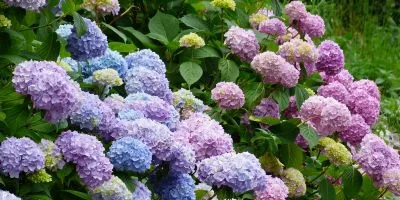
- Lush flower heads in shades of pink, blue, and white depend on soil pH—dramatic focal points.
- Light: Partial shade with morning sun; afternoon dappled light.
- Water: Weekly deep watering; increase during heat waves and avoid wetting foliage at night.
- Pesticide to Avoid: Avoid sulfur-based broad-spectrum sprays; use Neem Oil 3-in-1 or insecticidal soap for powdery mildew and mites.
19. Tuberose (Polianthes Tuberosa)
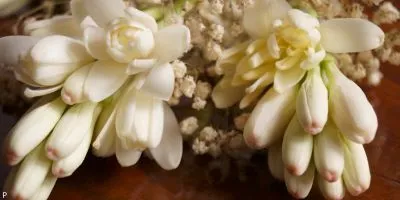
- Intensely fragrant, night-blooming spikes prized for perfumes and cut flowers.
- Light: Full sun (6–8 hours); tolerates light shade in very hot regions.
- Water: About 1–1.5 inches weekly during growth; reduce watering once foliage yellows.
- Pesticide to Avoid: Avoid neonicotinoids; control aphids and mites with neem oil or insecticidal soap.
Easy Care Tips for Outdoor Plants
Healthy outdoor plants depend on proper care. Follow these practical tips:
- Water Wisely: Water deeply at the plant base, not over foliage. In summer, water early morning so moisture soaks in. Avoid light daily sprinkling; instead, soak soil 6–8 inches deep, then let it dry somewhat. This encourages strong roots. A general rule: most plants need about 1 inch of water per week, more in very hot weather.
- Soil and Drainage: Enrich soil with organic matter (compost or well-rotted manure). Organic amendments improve moisture retention in sandy soils and aeration in clay soils. Avoid compacted or waterlogged soils. For poor drainage, plant on mounds or raised beds.
- Mulching: Apply a 2–3 inch layer of organic mulch (shredded bark, wood chips, straw) around plants. Mulch conserves moisture, suppresses weeds, and moderates soil temperature. It also gives beds a tidy look. Replenish mulch each year.
- Sunlight Needs: Match plants to sun exposure. Full sun means ~6–8 hours of direct light daily. Partial shade gets 3–6 hours. Read plant tags. Don’t plant shade-lovers (like ferns or hostas) in blazing sun. Likewise, sun-loving flowers need open, bright sites.
Other Tips
- Fertilizing: Feed plants with balanced fertilizer or compost in spring. Follow instructions to avoid over-fertilizing. Most flowering shrubs and annuals benefit from a monthly feed during the growing season. Always water after fertilizing.
- Pruning and Deadheading: Remove spent flowers (deadhead) to encourage more blooms. Prune shrubs and vines yearly to shape them and remove dead wood. For example, prune hibiscus and bougainvillea in spring. Trim only in dormant season for most trees and woody shrubs.
- Pest and Disease Check: Inspect plants regularly. Remove diseased leaves or infested parts promptly. Use soapy water or neem oil for minor insect issues. Encourage beneficial insects with flowering plants (see design ideas below). Avoid routine pesticides that harm pollinators.
- Seasonal Care: In cold climates (USA zones 4–6, North India hills), protect tender plants. Move potted succulents inside or wrap them when frost threatens. In winter, mulch perennials for root insulation. In hot summers (South India, SW USA), provide shade cloth or extra water for young plants.
Overall, simple care – right plant, right place, regular water, and a bit of feeding – keeps outdoor plants thriving.
Outdoor Garden Design Ideas
Creative use of outdoor plants turns any yard into a beautiful space. Try these ideas:
- Layered Planting: Mix heights and textures. Place trees in the back or center, shrubs in the middle, and groundcovers or flowers in front. This creates depth and interest. For example, a row of small boxwoods or ficus (evergreen shrubs) can form a hedge or border. In front, plant colorful perennials like coneflowers or marigolds for seasonal blooms.
- Color Themes and Texture: Use plant foliage and flower color as “paint.” You might group plants by color family (all greens, or a warm palette of reds/oranges) to make a bold statement. Or use foliage contrast: mix silvery-leaved plants (like lamb’s ear) with dark-green hedges. Monrovia design experts note that color and texture can activate design, even in a limited palette. Bright splashes (red or orange flowers) at intervals can surprise the eye. For example, punctuate a green garden with a red hibiscus or kanagroo paw (Anigozanthos).
- Water Features: If space and climate allow, add a small fountain or birdbath. Water elements provide a cooling feel and attract birds. Even drought-tolerant gardens can include recirculating water (like Monrovia’s Slot House design). Surround fountains with moderate-water plants like ferns, acacias, or lilies for a natural look.
- Garden Rooms and Paths: Use plants to define spaces. A line of hedge shrubs (boxwood, privet) can enclose a patio. Curving flower beds along walkways guide visitors. Gravel paths edged with lilies, salvia, or ornamental grasses add cottage-garden charm. Monrovia designers recommend creating zones (e.g., a succulent roof, a transitional fern/shrub border, and an ornamental planting near seating) to handle different moisture needs.
Other Design Ideas
- Wildlife and Pollinator Gardens: Plant native flowers to attract bees, butterflies, and birds. Include milkweed, blazing star, bee balm, and marigolds. These provide nectar and habitat. A pollinator-friendly corner benefits garden health. For example, butterfly weed (Asclepias) has bright orange blooms beloved by monarchs. Such plantings also serve as a natural pest control by inviting predatory insects.
- Vertical Gardening: Use trellises or fences for vines. Jasmine, bougainvillea, and passionflower grow up structures, saving space. Even in small yards, containers on stands or wall-mounted pots can add layers of green. Choose compact varieties for pots and move them seasonally.
- Evergreen Anchors: For year-round structure, include evergreen shrubs or trees. In India, Ficus, Indian laurel (Ficus microcarpa) or bamboo work well. In the USA, holly, spruce, or magnolia trees add greenery even in winter. These serve as backdrop for seasonal plantings.
By mixing plant forms (trees, shrubs, vines, flowers) and planning the layout, any garden can be both functional and pretty. Keep designs simple: focus on a few plant types repeated rather than many different species. As Monrovia notes, a limited, consistent palette often creates an elegant feel. Then add occasional pops of contrast (a red flower or bright foliage) for surprise.
Seasonal and Maintenance Notes
- Planting Season: In most zones, spring or early fall is best for planting. Soil is workable and rain is plentiful in spring, giving roots time to establish. In India’s hotter areas, planting in the cooler winter months can help young plants survive summer.
- Mulch & Fertilizer Timing: Add mulch after soil warms in spring. Feed flowering plants after the first bloom or in early summer.
- Pruning Time: Lightly prune after flowering (for spring bloomers like hibiscus or bougainvillea) or in late winter for summer-flowering shrubs. Remove dead branches anytime you see them.
- Pest Watch: Some pests are seasonal (e.g. aphids in spring). Natural predators (ladybugs, lacewings) are great; avoid pesticides. Strong blasts of water can knock off insects on leaves.
- Soil Testing: For large projects, have soil tested by a local extension service. It tells you pH and nutrient levels so you can amend correctly.
By caring for outdoor plants with these tips, gardens stay healthy and low-maintenance.
Quick Care Checklist
- Water deeply and infrequently – water the soil at the base, especially in morning.
- Add compost yearly – improves all soils.
- Mulch around plants – reduces weeds and holds moisture.
- Group by sun needs – plant sun-lovers together, shade-lovers together.
- Prune & deadhead – keep plants tidy and flowering.
- Use native plants – they need less care and help local wildlife.
- Observe your garden – check for stress or pests weekly and act quickly.
These steps keep any outdoor plant thriving in Indian or American climates.
Conclusion
Outdoor plants transform yards into beautiful, living spaces. By choosing plants suited to your climate – tropical hibiscus in India’s warm south, coneflowers in U.S. prairies, succulents in deserts – and giving them proper sun, water, and soil, even beginners can succeed. Use layers of plants, bold color accents, and wildlife-friendly blooms to design an inviting garden. With simple, consistent care, an outdoor space can bloom year after year.
Whether in India or the USA, remember the basics: sun, soil, water, and the right plant for the place. Following these tips will help any gardener create a vibrant outdoor garden full of life.

